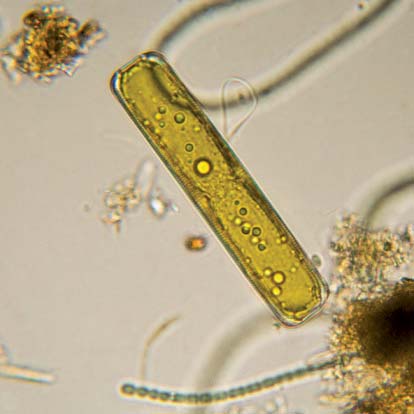UNAIR NEWS – Planktons are organisms that live in water with very limited movement and almost all of their movements are influenced by the movement of water currents. Plankton consists of phytoplankton or plant plankton and zooplankton or animal plankton. One of the phytoplanktons acting as a bioindicator in evaluating water quality and fertility levels is diatoms.
Diatoms, also known as golden brown algae, are included in the Bacilariophyceae class and contain more yellow pigments than green pigments. Because of this, the diatom-dense waters look brownish. Good water conditions will have a positive impact on diatoms to carry out the photosynthesis process with the help of carotenoid pigments.
“Therefore, it is necessary to conduct research on the abundance of diatoms associated with carotenoid content,” said Kukuh Septihandoko, S.Pi, alumnus of Faculty of Fisheries and Marine Sciences, Universitas Airlangga graduated in September 2020.
Kukuh analyzed the abundance of diatoms ( bacillariophyceae ) and the carotenoid content of diatoms in the Banjar Kemuning River Estuary, Sidoarjo Regency, East Java. “Diatoms contain carotenoid pigments more than any other genus. In addition, research on the abundance of carotenoids in the waters is still minimal, ”said the former Planktonology Practicum Assistant.
The reason for Kukuh’s research at estuaries is that river estuaries are a type of water with an open system, and depend on the condition of the surrounding environment. “Muara Banjar Kemuning which is a coastal area with lots of human activity causing the nutrient content in these waters to change,” he said.

Estuary is a type of water with an open system that is the meeting point between fresh water and sea, it can also be a connection between rivers and the sea. Kukuh continued, estuary can experience significant environmental changes due to several things such as tides, mixing of fresh water with sea water, and being the last point of deposition of a substance discharged from the river.
Sampling was carried out at 6 points, 3 points at the river mouth and 3 points at the border of fresh water with the sea. The average diatom abundance in Banjar Kemuning estuary during the study was 167,776 cells / L, 208,887 cells / L and 455,552 cells / L, with the highest diatom abundance in zone A in December and the lowest in zone B in October. Meanwhile, the average carotenoid content during the study was 1.062 µg / mL, 1.171 µg / mL and 1.684 µg / mL, with the highest carotenoid content in zone A in December and the lowest in zone A in October.
The conclusion obtained from the thesis of the alumnus from Jombang is that the abundance of diatoms in each month and the carotenoid content is also different. “The difference is due to the influence of weather and the conditions of the waters themselves, the better the condition of the waters, the more abundance of diatoms will be and the carotenoid content is also increasing,” he concluded. (*)
Author: Dimar Herfano
Editor: Feri Fenoria





